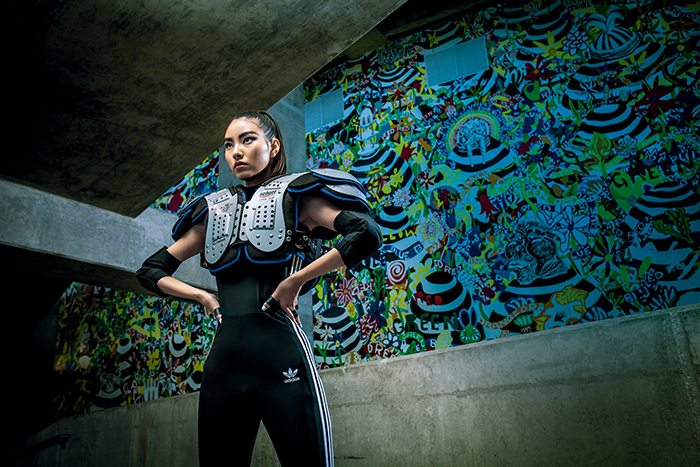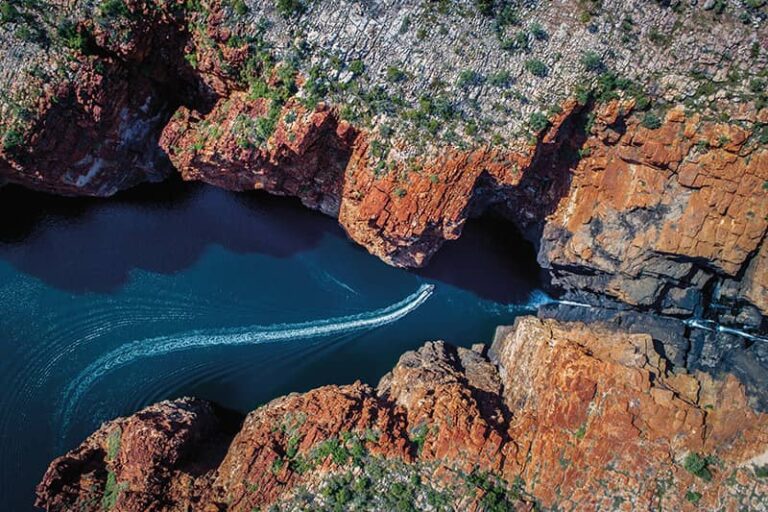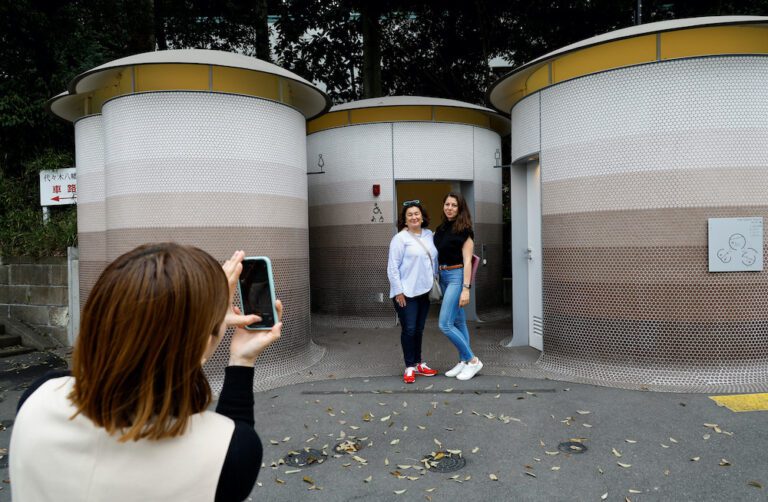I had to give up. There were days I just couldn’t pack more into my Dallas itinerary and I started to panic. There was still so much to see, explore and eat. But as a friend explained before I arrived, Dallas is always changing; you go, return in six months, and things have already changed. So even if I did manage to fit everything in, all would soon be different. I would have to return. And return again.
Dallas has experienced steady and significant growth, most notably in the repurposing of older commercial buildings downtown into residential towers and hotels. These developments continue the city’s growth trajectory, which previously shot up when major US railroad lines were laid through northern and eastern Texas to allow access to cotton, cattle and, later, oil. The construction of the Interstate Highway System reinforced Dallas’ prominence as a transportation hub. Today, four massive highways cut across the city, and two more interstates loop around it. Driving into Dallas can be overwhelming, but also exhilarating.
The city is a strong industrial, financial and technological centre as well as an important inland port due to the convergence of railroad lines, interstate highways, and the Dallas/Fort Worth International Airport, one of the busiest in the world. But there’s more than apartments, hotels and transport networks in this bustling American metropolis. There’s also modern Southern food, craft beer, community parks and surprising art and shopping.
DOWNTOWN REVIVAL
The regeneration of the city, particularly the downtown district, is impressive. The two-hectare Klyde Warren Park, built over the Woodall Rodgers motorway, is a feat of engineering and design, and is used for outdoor concerts as well as yoga classes, book signings, walking and games – tables are topped with chess boards. The park connects the Uptown neighbourhood with the Dallas Arts District and downtown, but the plants and trees somehow block out the urban grind of the area.
The ongoing transformation of downtown Dallas, which has meant enhanced foot traffic and quality of life, has of course increased demand for surrounding properties. “Civic leaders envision a place where people can build new traditions, share experiences and have fun in the centre of Dallas,” says Shalissa Colwell, vice president of marketing at Downtown Dallas. “Public parks strengthen our communities and benefit our health, environment, quality of life and economy. These are benefits that Dallas will enjoy for generations to come.”
In the downtown area, the Sixth Floor Museum at Dealey Plaza is dedicated to preserving and celebrating President John F. Kennedy’s life, career and memory. The museum is located at the very spot from which Lee Harvey Oswald allegedly shot and killed Kennedy, offering chilling insights into how things played out in 1963 as well as a step-by-step summary of the president’s last day. As I stood in the same spot Oswald did, looking down on Elm Street and the grassy knoll below, a sobering feeling came over me; what happened to Kennedy really hit home. I was glad I visited and learned more about 1960s America and the White House.

EAT, DRINK, SHOP
Classic American cuisine has been reinvented across the globe, and Texas barbecue is no exception. Tim Byres restaurant, aptly named Smoke, is one example that brings scratch cooking and smart sourcing to Southern comfort food. The award-winning chef (you may know his cookbook, Smoke: New Firewood Cooking) uses offbeat combinations and rubs in his slow-smoked meats, such as dark espresso and chilli on brisket, making this an exciting spot to indulge in America’s new style of barbecue. Texas Monthly magazine called Justin Fourton’s Pecan Lodge in Deep Ellum one of the top four barbecue joints in the state. High praise indeed, but if the queue is any indication, the magazine could be right. For something more traditional, head to Off The Bone Barbecue on Lamar Street, located south of downtown in a converted petrol station, for family-style ribs, brisket, sausage, pulled pork and smoked chicken. It’s what you imagine all barbecue joints around Texas to be like.
But if it’s a beer, particularly a craft brew, you’re after during your (likely sizzling) stay, you’re in luck. Since the Texas legislature relaxed brewing and distribution laws in 2013, craft operations have gone crazy in Dallas. The edgy Small Brewpub is worth dropping by to sample its range of craft beers, as is the kid- and pet-friendly Texas Ale Project, which offers beer flights and tours.
Chef-owner Matt McCallister’s FT33 restaurant is relaxed and fun, taking a modern Texas spin on pasture-to-plate dining using fresh seasonal ingredients grown by local producers for its daily-changing menu. If the sleek interior inspires you to shop, the restaurant sits within the Dallas Design District, filled with shop after shop of homeware stores to outfit your abode.
For further shopping inspiration, travel to NorthPark Center on the North Central Expressway in Dallas, where shops are surrounded by world-renowned 20th-century art. It’s quite surreal strolling past pieces by Andy Warhol, Roy Lichtenstein, Anish Kapoor and Henry Moore between department stores like Dillard’s, Macy’s, Nordstrom and Neiman Marcus in one of America’s largest climate-controlled “malls”. American labels Anthropologie, Ralph Lauren, Tory Birch, J. Crew, Gap, Banana Republic and Michael Kors sit alongside international stars Gucci, Burberry, Roberto Cavalli, Valentino and Versace, among many others.
Between the Ferragamo and Cole Haan stores is the NorthPark Center TaxFree Shopping store, a one-stop shop for processing your sales tax refund; you can pre-register at taxfreeshopping.com.
Highland Park Village is also worth a visit. Opened in 1931, the historic Spanish mission-style shopping spot is a designated National Historic Landmark and the nation’s first shopping centre. The centre showcases every luxury brand you can think of, including Saint Laurent, Tom Ford, Christian Louboutin, Jimmy Choo, Hermes, Dior and Chanel. Café Pacific is an institution for local diners and is the perfect place to people-watch over seafood or steak.
If you really want to experience a slice of Dallas life, head to the grande dame of the Dallas lunch game, the Zodiac at Neiman Marcus downtown. For more than 50 years, classics like the free cup of chicken broth and popovers with strawberry butter have helped create a destination dining experience. It makes you feel a bit like you’re lunching with the actors in the hit TV show Dallas.
A NEW ART FRONTIER
One of the biggest surprises in Dallas is the quality and diversity of the art scene, which ranges from the private art collection at Dallas Cowboys stadium to the Power Station, a cutting-edge gallery housed in a 1920s electrical plant. Dallas is small and accessible, which gives the average artist a chance, says multimedia-maker Lucia Simek, who also spent 10 years as an arts writer and now handles public relations for the Nasher Sculpture Center, one of the main fixtures of the 19-block Dallas Arts District. Dallas is an easy place to network and grow an audience, according to Simek.
“Dallas still has that frontier feel,” she says. “If you’re a young artist or writer or filmmaker, you can come here and get known quickly. It’s a city making a name for itself and everything feels possible. It’s an exciting place to be.”
Dallas has some veteran collectors such as Howard and Cindy Rachofsky, who own a gallery called the Warehouse on the outskirts of town. Business and banking are the lifeblood here; Howard Rachofsky ran a successful hedge fund, while Raymond Nasher – the art patron who, with his wife Patsy, opened the Nasher Sculpture Center in 2003 – was once the chairman of Comerica Bank.
The Nashers started collecting modernist sculptures in the 1960s, a time when they thought the medium was overlooked. They opened the retail complex NorthPark Center, (see previous page), in 1965 and adorned the mall with lesser-known pieces by Picasso and Mattise, which were moved to the new centre in 2003. Today, NorthPark showcases the growing collection of Nancy Nasher, Raymond and Patsy’s daughter, which includes several Andy Warhol screen prints, intermixed with modern sculptures.
The Nasher Sculpture Center, a sky-lit Renzo Piano masterpiece surrounded by a garden landscaped by Peter Walker, is most famous for 20th-century icons such as a walk-through canyon of rusted steel called My Curves Are Not Mad by Richard Serra and the sensual Age of Bronze figure by Auguste Rodin.

ART OF THE GAME
There aren’t many places in the world where sport mixes with art, and a football stadium in Arlington, Texas, would be one of the last places to look. But the Jones family, who opened AT&T Stadium, the home of the Dallas Cowboys, in 2009, achieved just that. They created a world renowned gathering place for sports and entertainment fans that also inspires art and design lovers with 16 show-stopping installations, as well as 42 smaller pieces by some of the biggest names in contemporary art. The result is a national landmark that levels the cultural playing field.
“We really wanted this to be a chance for others, who may not be inclined to go to an art museum, to be exposed to [art] and see it in a different setting,” says co-owner Gene Jones. “Maybe this will allow them to expand their horizons and look at art in other ways.”
The stadium itself is a swooping dome designed by architect Bryan Trubey that recalls both a football and a helmet shape, supported by single-span arched trusses on either side – the longest ever built – that lunge inward like running backs diving for a ball. The US$1.15 billion, 280,000-square-metre venue is considered the largest column-free room in the world. It can hold more than 100,000 people and fit the Statue of Liberty standing tall, even without the rectangular hole in the ceiling preserved from the original Texas Stadium. Like the artwork housed inside, the venue exudes openness with its crystalline glass walls that reflect the light and weather, and end zone doors that open up to fresh air. At night, exterior lights cast a lantern glow across the entire structure.

The first art installation visitors encounter at AT&T Stadium is Anish Kapoor’s Sky Mirror, located at the front entrance. The 15-tonne stainless-steel disc, which looks like a massive satellite, pays homage to both Greek and Renaissance perspectives on art: the former says art is meant to reflect the beauty and perfection of nature; the latter strives to shed light on humans and society. On one face, Sky Mirror captures clouds, planes, birds and stars, while the flipside magnifies the meeting and dispersal patterns of the crowd (and prompts thousands of selfies).
The stadium interior features paintings, photography, light displays and sculptures, surrounded by the kind of Italian tiles, glass and granite one would expect in a luxury hotel. Some artworks, such as Jenny Holzer’s LED video messages, blindside attendees at their seats between plays.
Anonymous messages such as, “The sum of your actions determines what you are” or “A positive attitude makes all the difference in the world” appear in massive letters out of nowhere, forcing fans out of the game and into their heads. The unexpected setting makes the words all the more meaningful.
While most of the commissioned artists, hand-picked by a North Texas cultural council, are from out of state or overseas, there is some Texas talent on display. Local artist Annette Lawrence is one example, responsible for the mesmerising cable installation Coin Toss, which stretches 14 metres across the main concourse and changes with the flow of fans. Franz Ackermann’s abstract paintings Coming Home and (Meet Me) At the Waterfall as well as Dave Muller’s Solar Arrangement make Lone Star State references. The sun in Solar Arrangement is a yellow rose, calling to mind the old Texas folk song “Yellow Rose of Texas,” which has been covered by musicians such as Elvis Presley.
The biggest theme of the works, however, is football, extending the sport-art thread that ties the whole place together. One of the simpler pieces, Cheering Crowd by Wayne Gonzales, sums up the experience of attending a game at AT&T Stadium. Three repeated photos of fans cheering at a sporting event create a Warhol-esque triptych showing a sea of people floating in blue and grey. The panels capture “the sensation of losing one’s self in the crowd only to find yourself as a part of something bigger, more powerful and profound”. Win or lose, punters leave with a buzz. Much like I did when I boarded my flight home from Dallas.
MiNDFOOD flew with Air New Zealand. airnz.com.au







